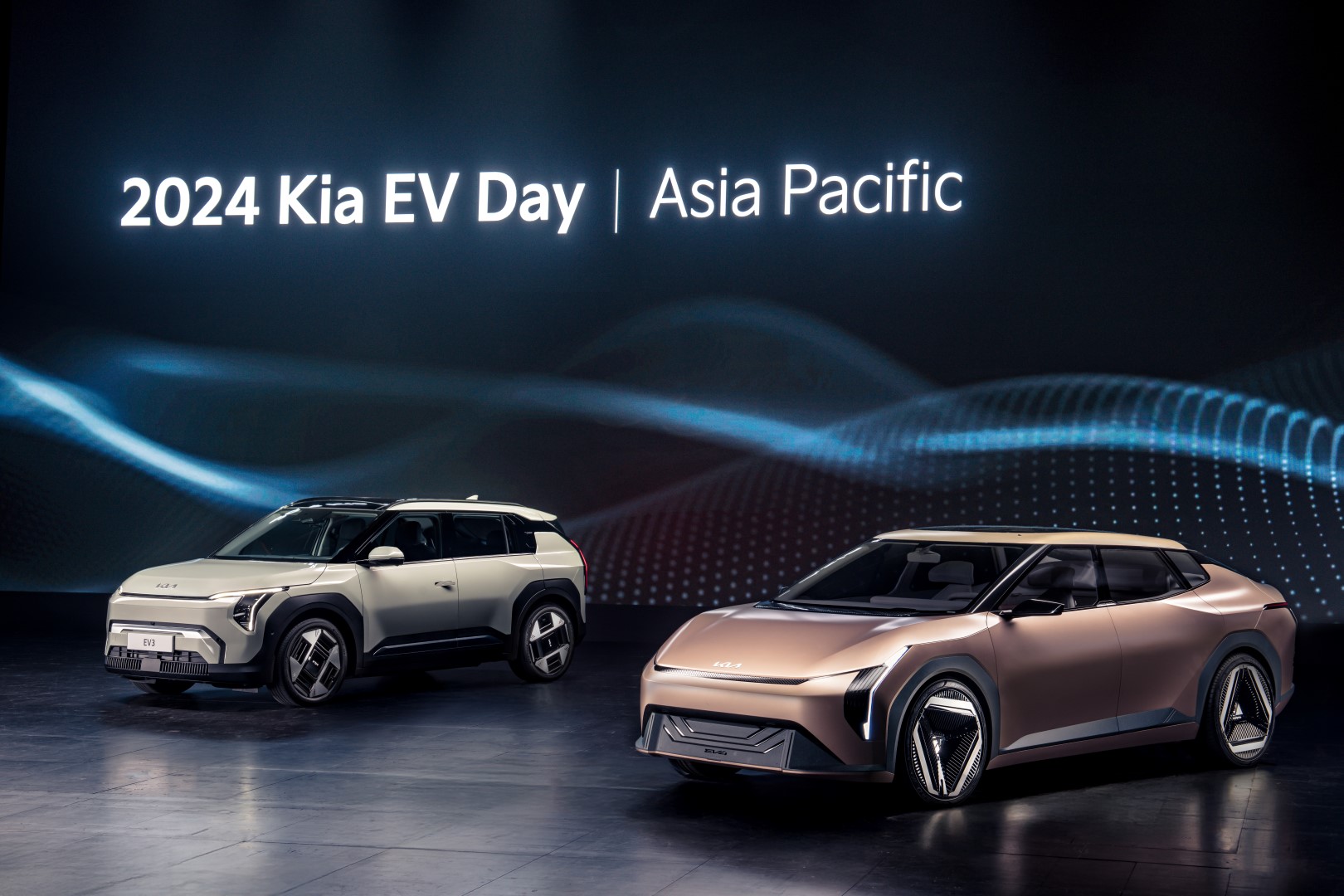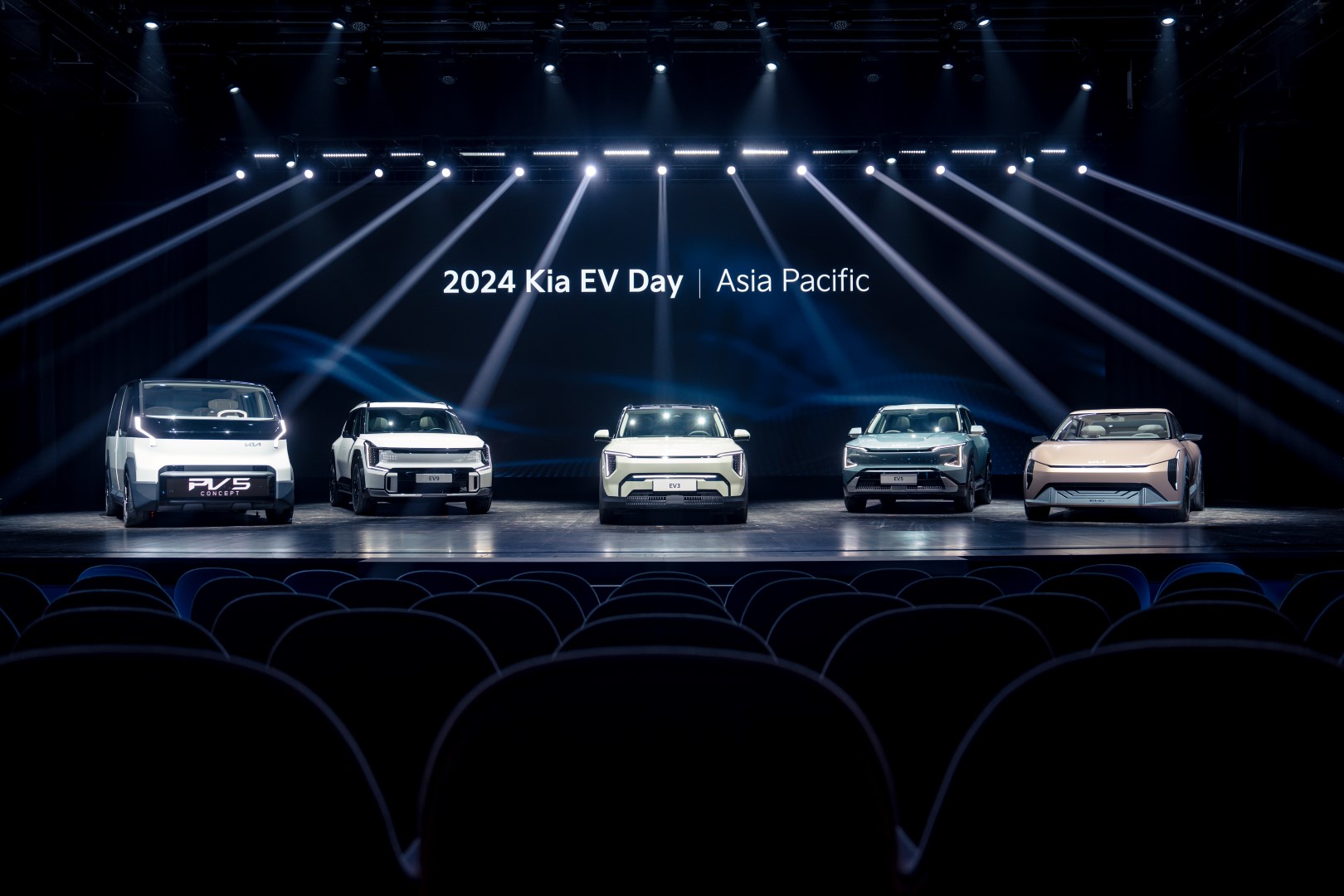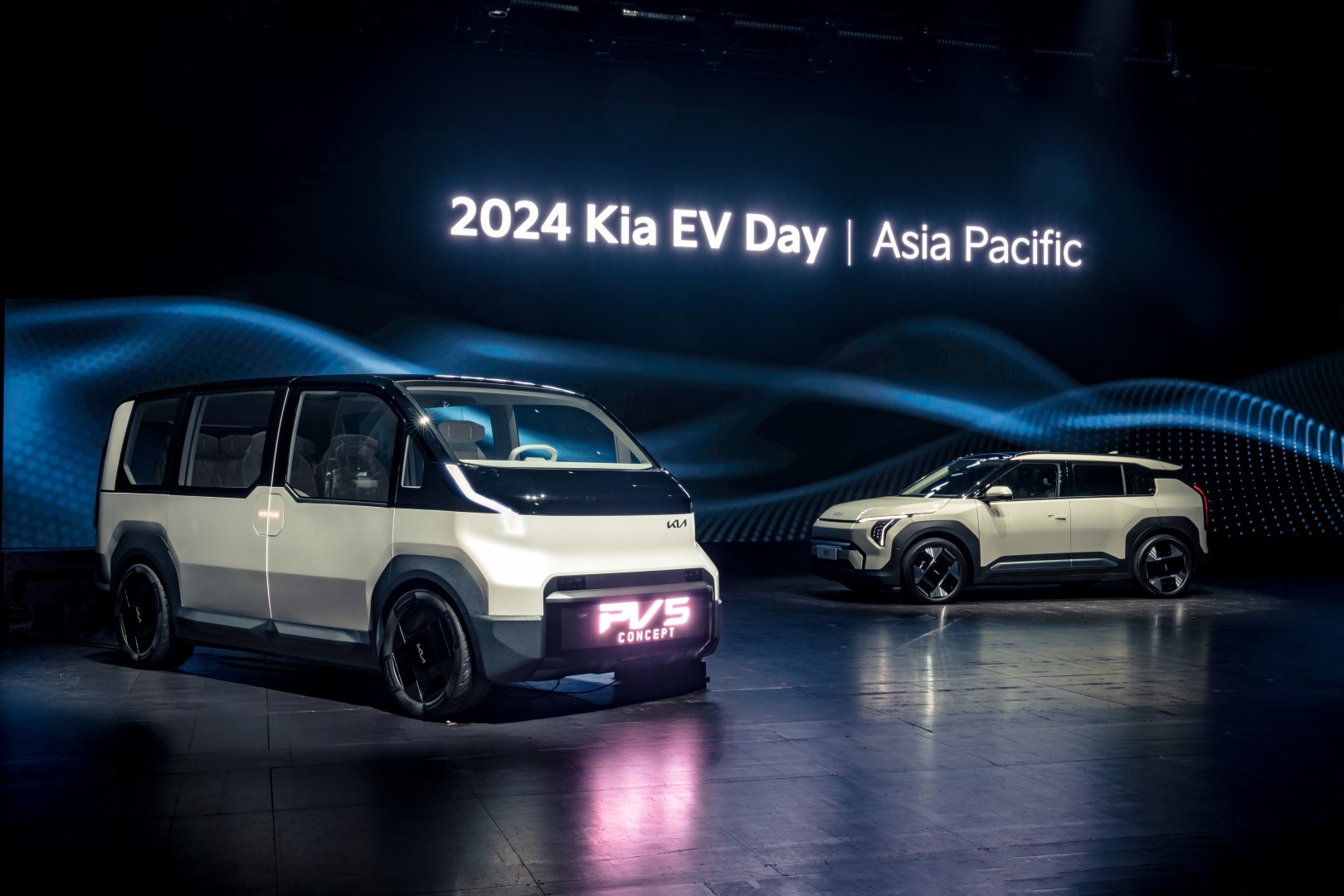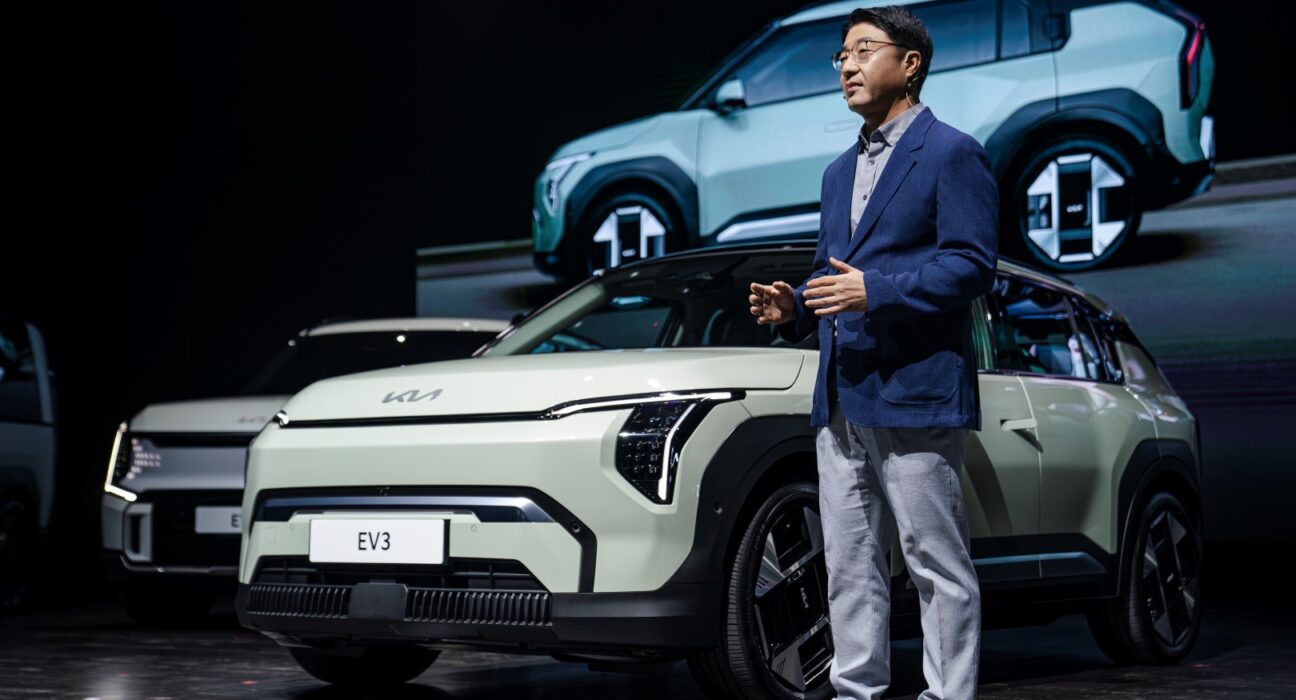Kia Asia Pacific celebrated the launch of the 2024 Kia EV Day, showcasing the brand’s continued commitment to sustainable mobility and electric vehicles (EVs). This event follows the success of the 2023 global Kia EV Day and highlights the company’s evolving position as a leader in the EV revolution.
Key highlights included the Asia Pacific debut of the Kia EV3, a compact electric SUV scheduled for launch in 2025, and the Concept EV4, a futuristic EV sedan. The EV3, designed for the compact EV SUV segment, incorporates advanced features such as Electric Dynamic Torque Vectoring Control (eDTVC) and various advanced driver assistance systems (ADAS).

Kia also introduced the Concept PV5, a versatile platform beyond traditional vehicles, intended for diverse applications like ride-hailing and logistics.
In addition, Kia showcased the award-winning Kia EV9, a flagship model that has received global recognition. The event emphasized Kia’s goal of offering a full range of EVs across different price points, expanding hybrid EVs and PBVs, and ensuring global EV production capabilities with plans for six EV production bases by 2025.

Kia’s strategy is aimed at making EVs more accessible, with a target of selling 1.6 million EVs annually by 2030. The company also stressed its commitment to enhancing customer experiences through personalized technologies across various touchpoints.
“Our inaugural Asia Pacific region EV Day is a testament to Kia’s unwavering dedication to sustainable mobility and our relentless commitment to driving the EV revolution forward,” said Ki Seok Ahn, President & CEO of Kia Asia Pacific HQ.

“This event represents a significant milestone in our journey towards a more sustainable future, displaying our advanced EV technologies, innovative designs, and meticulous strategies. By prioritizing a customer-centric approach, we are not only meeting the demands of today’s consumers but also setting the stage for a greener tomorrow. We are excited to have shared our vision and innovations with our valued partners and stakeholders across the APAC region.”


